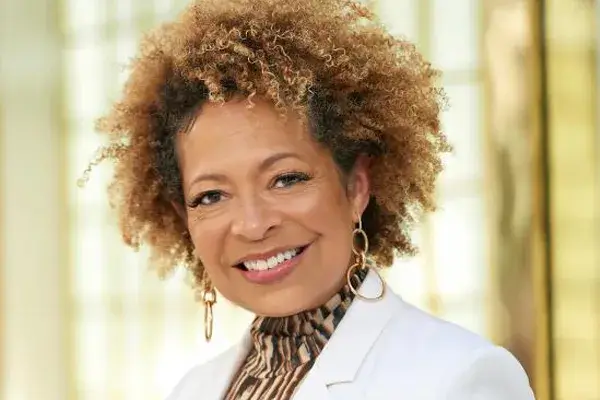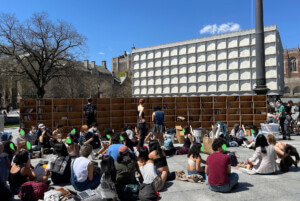By the numbers, the American construction industry employs 13 million people, or 9 percent of the total U.S. work force. As of 2022, Black workers held only 7 percent of all architecture, engineering, and construction (AEC) jobs even though they constitute 13 percent of the total U.S. workforce. By comparison, white workers create 77 percent of the total labor pool, 87 percent of all construction jobs, and 83 percent of architecture and engineering jobs.
Moreover, systemic barriers exist that prevent minorities in construction from becoming business owners, and women only make up 20 precent of construction’s labor pool. At the same time, systemic inequity facing communities of color and schools across the U.S. inhibits many students from entering architecture and engineering, two overwhelmingly white fields that notoriously saddle recent graduates with tremendous amounts of student debt. As recently reported by AN, as a result roughly 2 percent of licensed architects in the U.S. are Black while under 0.5 percent identify as Black women.
AEC Unites is a new program that seeks to dismantle those barriers, facilitate pipelines for students of color into AEC jobs, and unlock opportunities for Black talent and Black-owned businesses. The initiative was founded by Deryl McKissack, an engineer and CEO of McKissack & McKissack, a national architectural, interiors, program and construction management and infrastructure firm based in Washington D.C. AEC Unite’s executive director is Tia Perry, an award-winning diversity, equity, and inclusion (DEI) leader who brings 17 years of experience to AEC Unites in helping Black-owned businesses thrive.

To achieve its goals, AEC Unites released its 2023–24 Strategic Plan which outlines actionable items that can be taken to make AEC more inclusive. “Our industry has a huge need,” Deryl McKissack said. “We need to add 600,000 more workers to the construction industry in the next ten years. But not only do we need workers, the U.S. is also losing its place competitively in the world market, so we need new, innovative ideas too,” McKissack told AN. “We feel as though there’s a group of people that have been left out of the economy and if we graft them in, maybe we will get a shot in the arm of new innovation, new ideas, and new solutions to the challenges we face as an industry.”

McKissack notes that among her goals as founder of AEC Unites is “trying to get more Black kids at a young age interested in STEM, which leads to professions in the AEC industry,” she said. “There are a lot of great organizations out there already catering to these kids, but they’re fragmented. We would like to bring all those organizations together, or at least connect them to provide career paths for Black kids. So if a mother is in, say Los Angeles, with a six-year-old son or daughter who doesn’t know what they want to be, or maybe they walk by a construction site and want to go into that, or be an architect, AEC Unites will show them opportunities to get there.”
Aside from educational pipelines, AEC Unites also prioritizes helping Black workers in construction become Black business owners and ascertain minority-owned business certificates. Nationally, less than 10 percent of federal contracts today are awarded to minority-owned businesses. A recent report by McKinsey showed that the median annual wage for Black workers is 30 percent lower than that of white workers; a disparity that amounts to a $220 billion annual disparity between Black wagers and their white counterparts. In total, white workers make 570 percent more income than Black workers, who in the U.S. today has the nation’s lowest median net worth at $24,100. There is also a 2-1 unemployment disparity between Black and white workers, according to the Economic Policy Institute.
“There’s a huge wealth gap between Black Americans and white Americans in this country,” McKissack said. “This is partly because of the ability to own successful businesses which has to do with having sustainable work,” McKissack continued. “There’s a huge certification process that all firms have to go through that are minority-owned, and it’s very cumbersome. I personally have a full-time person in my office that handles these certificates. Sometimes certification takes six months, other times it’s a year,” she said. “We would like to be the certifying agency for those firms, and help Black businesses that need training and assistance.”
Today, AEC Unites includes in its board of directors architects and builders from Moody Nolan, Gensler, McKissack & McKissack, HOK, Jacobs, Stantec, WSP, Turner Construction, H.J. Russell, Powers & Sons Construction, and Clark Construction. Membership applications can be submitted online at aecunites.org.











